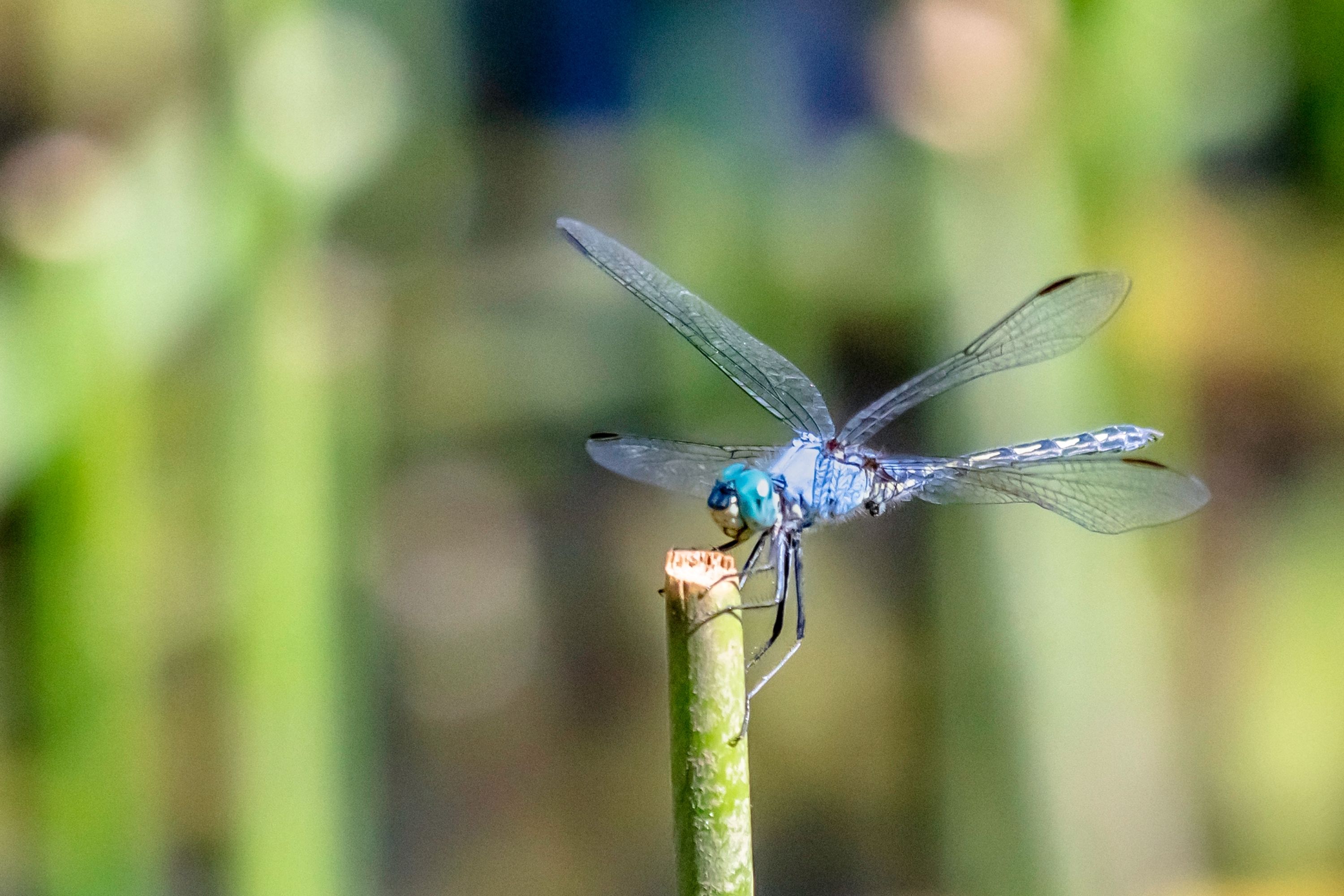Blue dasher
(Pachydiplax longipennis)

Description
The blue dasher (Pachydiplax longipennis) is a dragonfly of the skimmer family. It is the only species in the genus Pachydiplax. It is very common and widely distributed through North America and into the Bahamas. Although the species name longipennis means "long wings", their wings are not substantially longer than those of related species. Females do, however, have a short abdomen that makes the wings appear longer in comparison. The blue dasher grows up to 25–43 mm long (1-1.5 in). The males are easy to recognize with their vibrant blue color, yellow-striped thorax, and metallic green eyes. Females are somewhat less colorful than the male, an example of sexual dimorphism. While they have a matching yellow-striped thorax, their abdomen has a distinct brown and yellow striping that sets them apart from the male, along with contrasting red eyes. Both sexes develop a frosted color with age. Pachydiplax longipennis exhibits aggression while finding mates and foraging, and they are not under any conservation threats. Pachydiplax longipennis is a commonly spotted dragonfly species in the United States, and this species is found in many types of habitats. These habitats generally consist of some kind of body of water, like a stream, river, or lake. This species has now been spotted in lower portions of Canada (Ottawa), and it is suggested that climate change is allowing for a broadening of this species’ distribution. Dispersal of this species is linked to territorial behavior. Males of this species exhibit extreme territorial behavior, often leading to repercussions for smaller males. Smaller males tend to be driven away from breeding grounds by larger males, resulting in these smaller males dispersing to other areas. Researchers believe that this method of dispersal could be important in further studies of population genetics and gene flow of this species. Wing coloration also varies with the range of this species, indicating that dispersal location and wing coloration are connected. Populations of P. longipennis occurring in more hot regions tend to lack the darker wing coloration present in populations in cooler regions. This darker wing coloration can help with thermoregulation, flight performance, and territory securement. Thus, temperature has a large effect on the evolution of this species’ wing coloration across its dispersal range.
Taxonomic tree:







